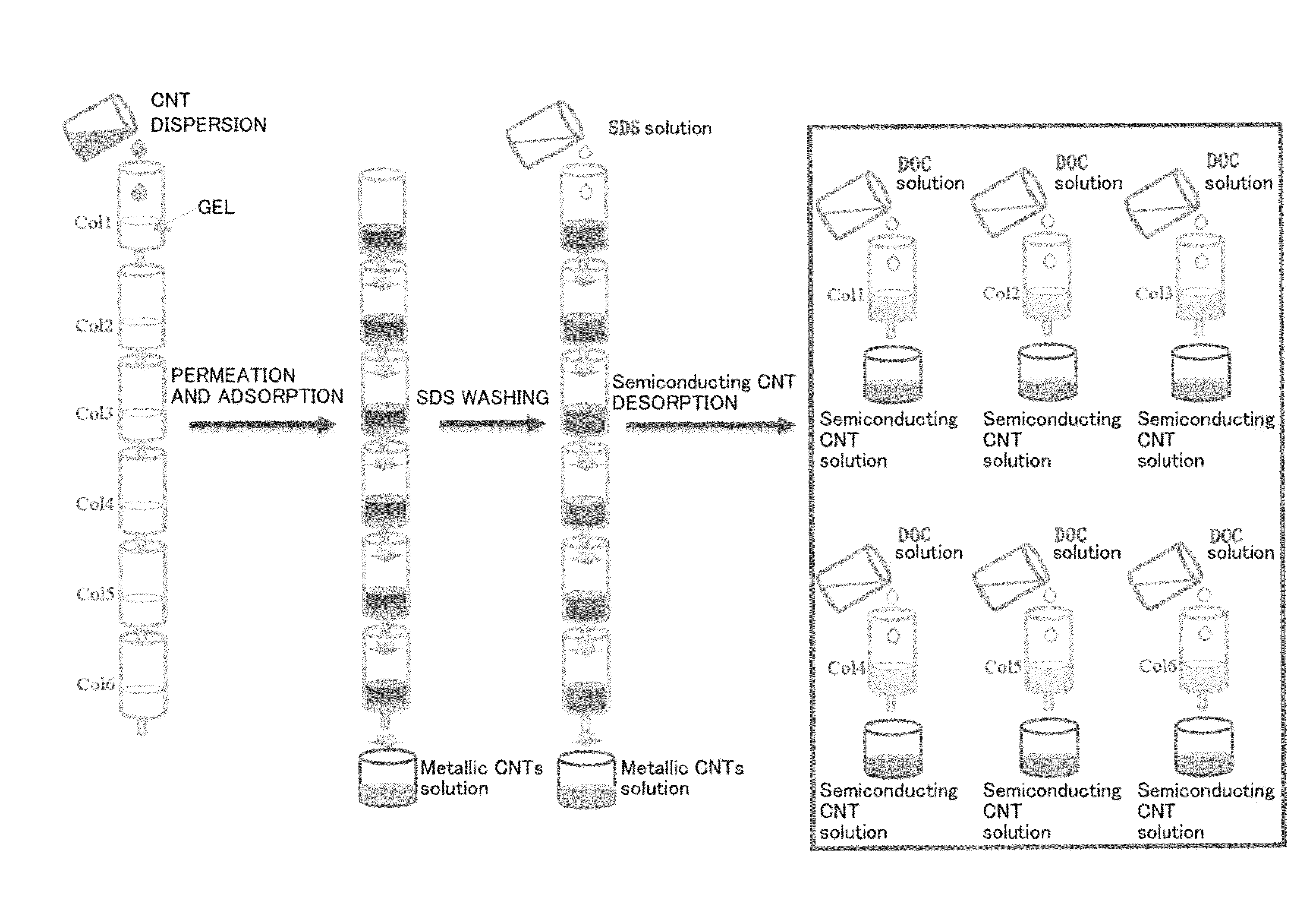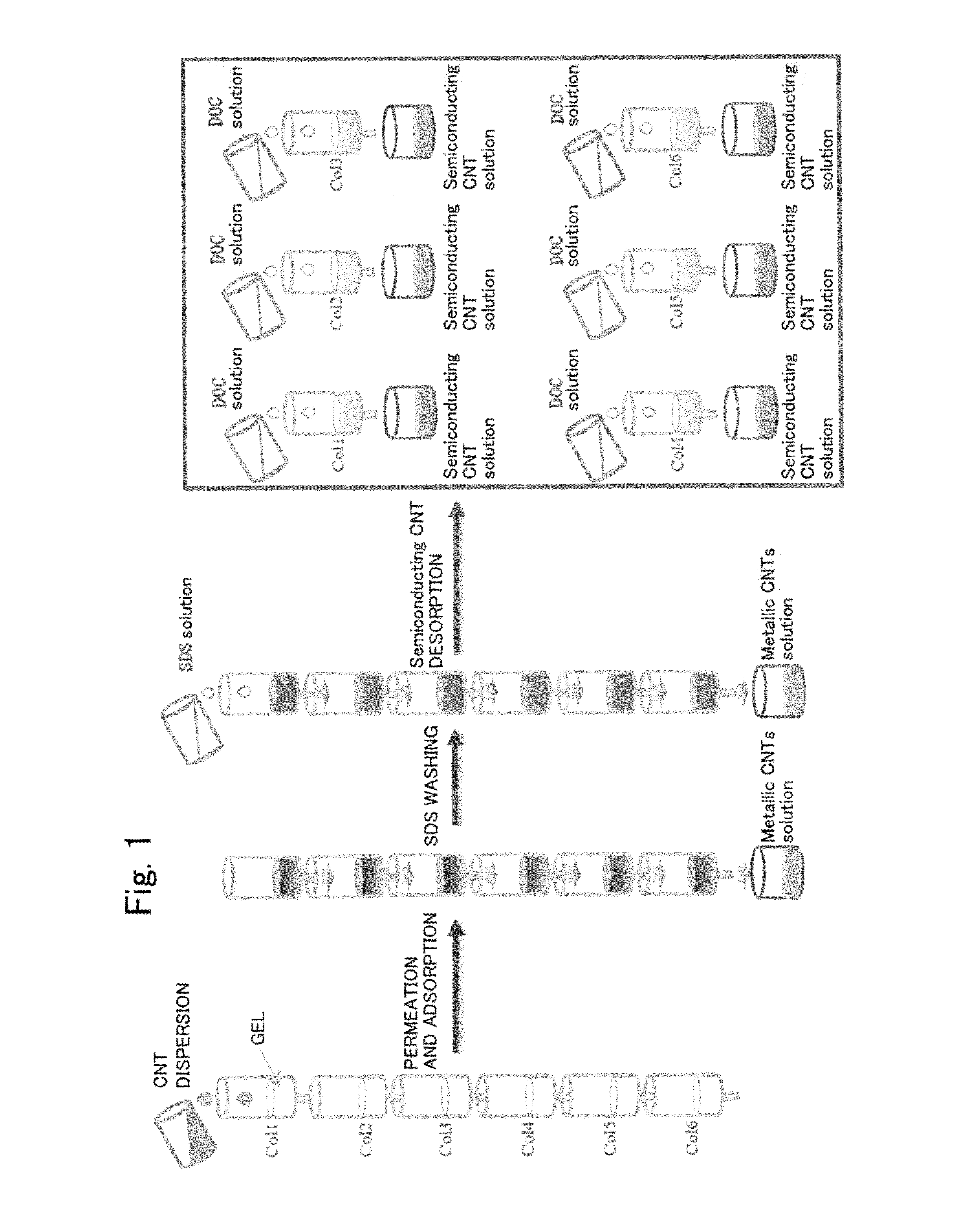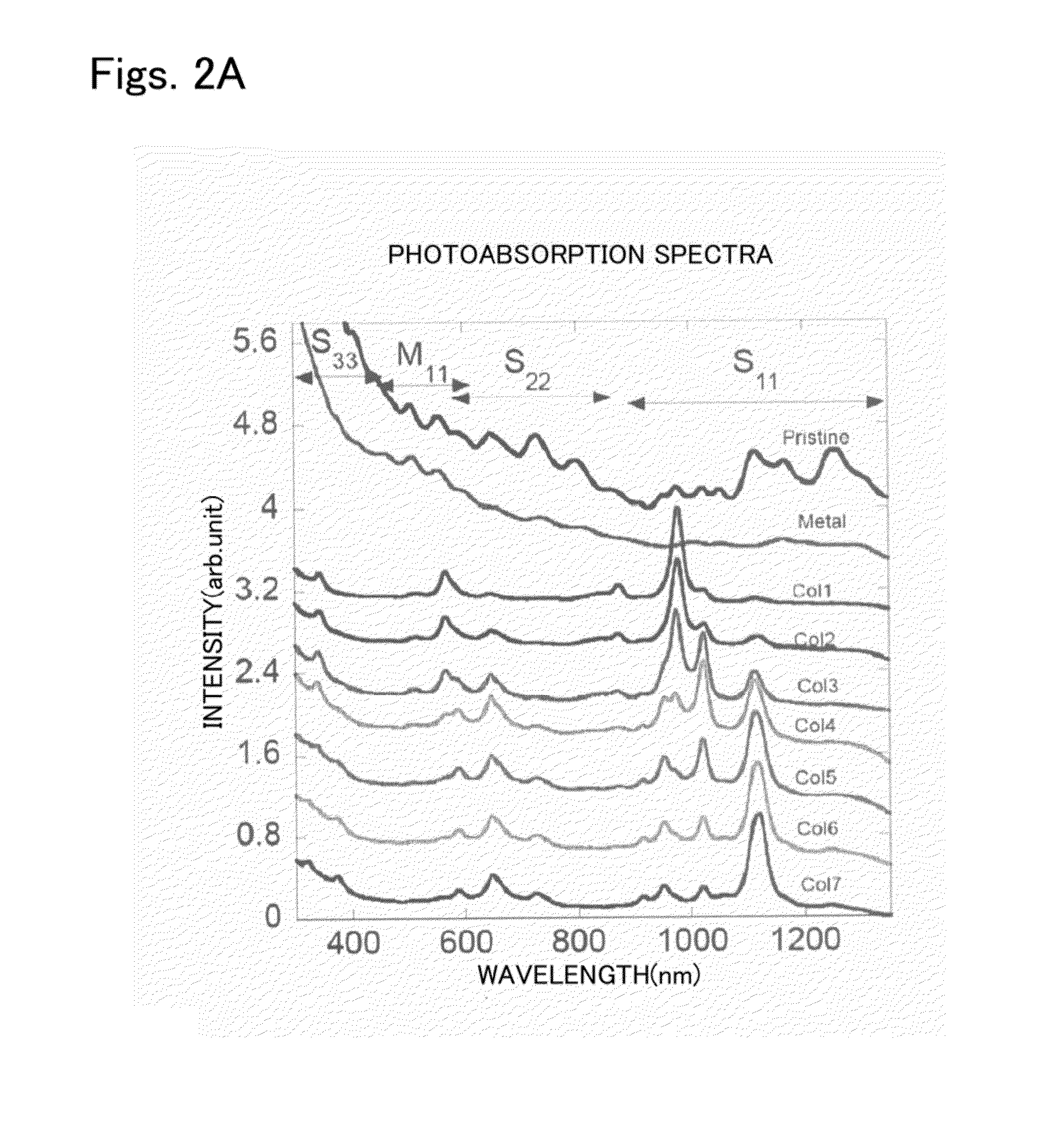Method for separating and collecting carbon nanotube, and carbon nanotube
a technology of carbon nanotubes and carbon nanotubes, which is applied in the direction of separation processes, instruments, ion-exchangers, etc., to achieve the effects of accurate separation, high accuracy and automatic separation
- Summary
- Abstract
- Description
- Claims
- Application Information
AI Technical Summary
Benefits of technology
Problems solved by technology
Method used
Image
Examples
example 1
[0087]A CNT sample was added in large excess to a column to separate and collect semiconducting CNTs of single chirality.
Preparation of CNT Dispersion
[0088]A 2% SDS aqueous solution (100 ml) was added to 100 mg of Hipco-CNTs (CNI; CNTs synthesized by chemical vapor deposition; diameter 1.0±0.3 nm). The solution was sonicated at a 20 W / cm2 output for 20 hours while being cooled in cold water, using a tip-type ultrasonic homogenizer (Sonifier; Branson; tip diameter 0.5 inches). The dispersion resulting from the sonication was subjected to ultracentrifugal separation (197,000×g, 15 min) to collect 80% of the supernatant. The solution was then used as a CNT dispersion.
Column Preparation and Separation
[0089]Gel beads (Sephacryl S-300; GE healthcare) were used as a column support. The gel beads were charged into a plastic column (length 7.5 cm; inner diameter 1.5 cm) until the height reached about 2 mm, and equilibrated with a 2% SDS aqueous solution after passing deionized water. A CNT d...
example 2
[0093]The same experiment conducted in Example 1 was performed by using a plurality of columns connected in series. CNTs of different chiralities were adsorbed in different columns at once, and, after separating the columns, the CNTs adsorbed in each column were collected to separate and collect the CNTs of different chiralities at once.
Column Preparation and Separation
[0094]As represented in FIG. 1, six columns were connected in series. Sephacryl S-300 that provides desirable purity for the (6,5) CNTs was used for the columns of the first and second stages, though separation is possible with either of Sephacryl S-200 and Sephacryl S-300. Sephacryl S-300 was charged to the height of about 2 mm in the first column, and to the height of about 3.5 mm in the second column. Sephacryl S-200 was used for the third to sixth columns by being charged to the height of about 6 mm. Prior to the separation, the columns were equilibrated with deionized water and a 2% SDS aqueous solution in this o...
example 3
[0104]The same experiment conducted in Example 2 was performed by using different CNTs (CoMoCAT-CNTs, Southwest Nano Technologies; diameter 0.8±0.1 nm). Six columns charged with Sephacryl S-300 were connected in series, and a 10-ml CNT dispersion was added thereto. Two cycles of separation using a 2% SDS aqueous solution as a developing solvent were repeated, and the CNT solution that did not bind to any of the columns was collected as metallic CNTs (Metal). Almost all of the semiconducting CNTs adsorbed with a 2% SDS solution, because the CNTs used in this experiment had small diameters, and were strongly adsorbable by the gel. Accordingly, the third adsorption experiment using a lowered SDS concentration was not conducted. The results of photoabsorption spectral measurement using the CoMoCAT-CNT showed the tendency for CNTs of smaller diameters to adsorb on the columns sooner than the thicker CNTs (FIG. 5). FIG. 6 represents the result of fluorescence spectral measurement. The CoM...
PUM
| Property | Measurement | Unit |
|---|---|---|
| concentration | aaaaa | aaaaa |
| concentration | aaaaa | aaaaa |
| absorption wavelength | aaaaa | aaaaa |
Abstract
Description
Claims
Application Information
 Login to View More
Login to View More - R&D
- Intellectual Property
- Life Sciences
- Materials
- Tech Scout
- Unparalleled Data Quality
- Higher Quality Content
- 60% Fewer Hallucinations
Browse by: Latest US Patents, China's latest patents, Technical Efficacy Thesaurus, Application Domain, Technology Topic, Popular Technical Reports.
© 2025 PatSnap. All rights reserved.Legal|Privacy policy|Modern Slavery Act Transparency Statement|Sitemap|About US| Contact US: help@patsnap.com



